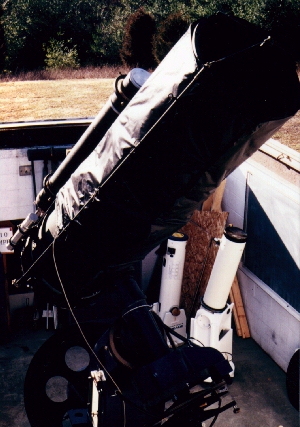
This photograph shows the 24” McMath Telescope.
Bernard Friberg (observatory director at the time this photograph was taken) is standing along the south wall of the building. (The walls lie approximately along north, south, east and west axes.) The following can be seen in this photograph:
- The declination drive is dark but visible in the center of the photograph.
- The right ascension drive is hidden behind the declination drive.
- A small telescope is visible on the right.







